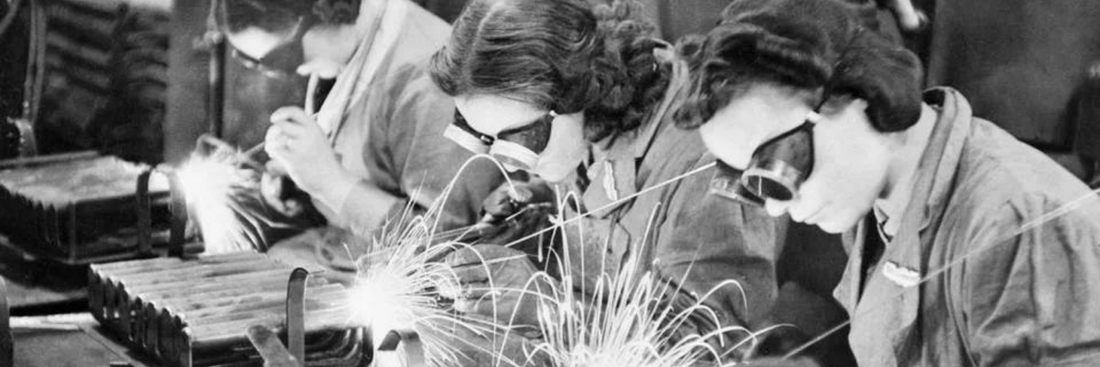Welding has been around in the most primitive form since the Bronze Age. Although welding has been around for a very long time, PPE has not. Things like shielding gas, helmets, goggles, and FR clothing have all been invented in the last 100-150 years or less. On top of this, PPE did not gain popularity until the 1940s and wasn't mandated until OSHA went into effect in 1970. Read below to learn the history and adaptation of PPE throughout recent history.
Goggles
Powell Johnson is credited with being the first to invent something that resembles modern-day safety glasses in 1880. Johnson called them "eye protectors" because they were intended to reduce the intensity of bright lights. This was accomplished by using two pieces of opaque cloth that could still be seen through but offered some protection.
Something that resembles more modern safety glasses was created shortly thereafter by Julius King in 1909. As you can see in the picture below, these safety glasses resemble more modern goggles. These safety glasses had mesh side shields and metal earpieces. The lens was a thick piece of glass. In 1913 American Steel Foundries had stated that their eye accidents went down 75% thanks to these safety glasses saving one or both of their employee's eyes.

Modern day safety goggles have come a long way in the way they look and the materials they use. Now most goggles are made out of a plastic like polycarbonate. This provides greater durability as well as being much less likely to shatter. If you are in the market for goggles make sure to see what Bakers has to offer here.
Helmets
Before welding helmets were ever created people had other ways to protect their faces and eyes. One common practice was the use of goggles as well as a face shield like cloth. This obviously did not offer a lot of protection but it was better than nothing and there certainly wasn't anything on the market to fill that need yet.
This changed when in 1937 Willson Products created the first welding helmet. This helmet was revolutionary because it protected the welder's face and lungs while also protecting their head and ears. This was the first product created that resembles the modern-day welding helmet. Below is a picture from a magazine of someone using the helmet when it first came out.

The next major advancement in welding helmet technology came in the 1980's. This was the introduction and development of the ADF. (Auto Darkening Filter) A Swedish company named Hornell (now a part of 3M / Speedglas) was credited with making the first ADF. This was a much welcomed improvement considering how popular ADF's are today. This eliminated helmet nodding or needing to remove the helmet to see, allowing welders to stay protected.

Take a look at all of the welding helmets Bakers has to offer here. 3M / Speedglas in specific offers the most advanced helmets and recently launched the first ever curved ADF welding helmet. Giving the lightest, widest and clearest view for a professional welder.
FR Clothing
Surprisingly, FR materials have been around and in use since 450 BC. Asbestos was used to make material fire resistant back in this time. Things like candle wicks, tablecloths, or even paper towards the start of the first century. It is well known now that asbestos is not safe to use and thankfully there are modern solutions for FR material.
Between the 1700s and 1900s, there were many different "recipes" to create FR clothing and materials. During this time adding solutions and chemicals was the only way to make something FR. The issue with that was after a few washes or if the material wasn't well maintained it would not keep its FR properties.
This brings us to the FR technology that we have today. FR clothing today is made out of compounds that are not flammable. These compounds are engineered at the molecular level to do so. This means that FR materials don't have to be soaked or infused with some solution. There are also synthetic materials that are starting to be used in FR technology that offer the same protection.

Overall FR technology has come a long way throughout history and appears to be improving to this day even. Check out all the FR clothing that Bakers Gas has to offer here.

